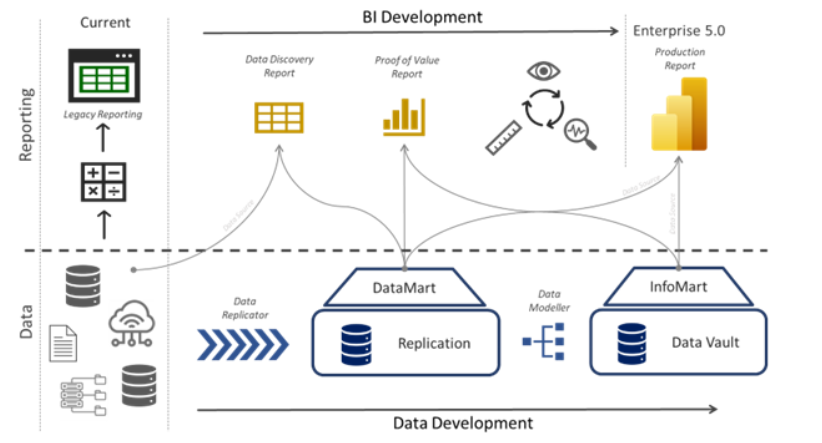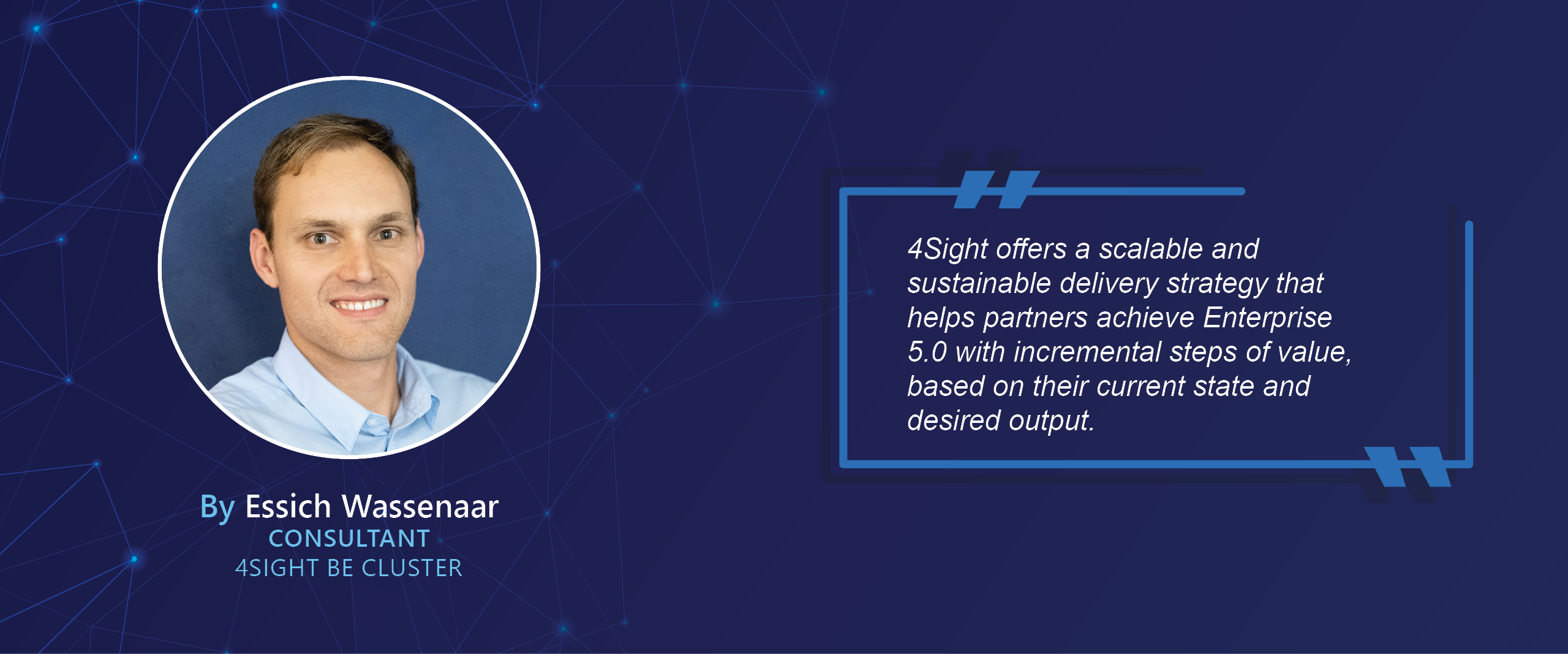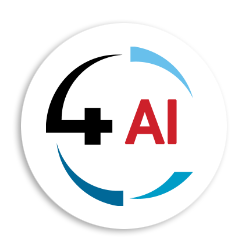Blog - Business Environment
Advisory to Agile Enterprise Solutions

4Sight's Advisory business is a key component of the Business Environment cluster, which aims to help our partners achieve digital excellence and become Enterprise 5.0 ready. The Advisory business consists of four main functions that cover the entire spectrum of digital transformation:
Digital Discovery - We conduct comprehensive assessments of our partner's current digital landscape to understand current designs, identify digital assets, highlight gaps and opportunities, and benchmark their system’s performance, quality, and scalability against industry best practices.
Digital Analysis - We evaluate our partner's digital capabilities across various dimensions, such as strategy, business processes, technology, and data. We provide a clear picture of their strengths and weaknesses, and how they compare to their peers and best practices.
Solution Architecture Guidance - We assist with unique digital solution designs that address our partner's specific needs and challenges, following 4Sight’s Enterprise 5.0 methodology. We ensure that the solutions are scalable, secure, sustainable, and aligned with the latest technologies and standards.
Digital Transformation Roadmap - We develop a strategic vision and roadmap for our partner's digital transformation journey, taking into account their objectives and capabilities. We help them prioritise the most impactful initiatives to ensure an agile delivery with ROI being realised throughout the transformation. We provide monitoring on progress and provide ongoing support and implementation guidance to secure value for our partners.
By applying these functions, the 4Sight advisory service aims to digitally transform all our partners to be an Enterprise 5.0 compliant organisation. Over the next few weeks, we will unpack typical problems that business environments face on their path to digital transformation. Some of these problems might have a variety of answers, with only a select few leading your organisation to a scalable and sustainable digital future.
The topics will include Advisory to Agile Enterprise Solutions, where delivery techniques designed for scalability will be explored; Creating true business intelligence, which will explore the possibilities of BI and how these drive informed decisions. We will also discuss Data-driven AI and Maximising the power of the cloud, which investigates the role data management plays in AI processing and how the cloud accelerates our partners to their AI goals. The transformation of unmanaged data and business process are key to obtaining clean datasets into a data management layer and will be unpacked in Automating and making business processes intelligent.
Roadmap to Enterprise 5.0
At the heart of 4Sight’s Enterprise 5.0 methodology is a data strategy that ensures sustainability and scalability. The data strategy includes numerous data management qualities such as Data Replication, Data Vault 2.0, etc, but the distinguishing feature of the strategy is the highly agile deployment style that Enterprise 5.0 offers.
The development of a complete data management layer can be a time-consuming endeavour that leaves an end user with no palpable value during the development phases. 4Sight recognised this problem and addressed it by creating a delivery strategy that allows for game changing scalability, meeting our partners exactly where they are in their digital transformation journey and taking them to Enterprise 5.0 with incremental steps of value.
This deployment also softens the cost of a digital transformation project by creating a true roadmap with useful outputs after each milestone. The benefits after each phase of the designed roadmap unlocks funding for the next phase and confirms the value of the transformation project.
The first step towards 4Sight’s Enterprise 5.0 delivery strategy will be to discover the partner’s current environment and then build a technical roadmap to Enterprise 5.0. The current state and the pace at which the partner chooses to transform largely dictates the activities per phase. These activities are selected based on the output that the partner wishes to achieve. In the event that a specific BI dashboard is to be built, the details of this dashboard will drive the nature of the activities. To illustrate this roadmap design and delivery process, a recent deployment at a mining organisation can be considered:
Mining organisation deployment example
The challenge was to deliver an accurate KPI dashboard within 4 months. The data required to drive these KPIs was sourced from 11 different source systems and over 200 tables to load. All KPI calculations were to be done in SQL as per the Enterprise 5.0 methodology, thus allowing for basic modelling and visuals used in the report. For a dashboard of this magnitude, the sustainable data management layer alone would take close to 6 months to develop. However, with the agile deployment style of the Enterprise 5.0 methodology, it was possible to achieve the partner’s need within the requested timeline. The deployment plan was as follows:

The key to the deployment is not only to find a way to split the data management layer development from the BI reporting development, but rather to build in enough touch points to transfer the BI report between different data sources. This gives both the data and BI development teams their own development timelines without the one waiting for the other. Now this makes the 4-month deadline seem a lot more reachable if we consider that the partner is only looking for an accurate KPI dashboard to meet their own target.
By focusing the BI team to deliver a KPI dashboard with the best available datasets, they can carefully work through the end-user details whilst showing them the wireframes and potential outputs to manage expectations. As the data team progresses with the data management layer development, they make more complete and accurate datasets available to the end-user. The end-user experience of the delivery cycle then reflects an agile delivery with weekly improvements on the KPI dashboard as well as the data passed through from the data management layer, until it reaches the end state of a production grade report built on a fully sustainable data management layer.
This approach allows for the partner to change development direction without causing rework. Updates to business rules or data quality are also discovered early in the development cycle and can be addressed before an expensive data warehouse is built. The methodology was built on the concepts of adding quality control checks throughout the development process to lessen the load on potential bottleneck-steps or expensive assemblies (as introduced by E. Goldratt, The Goal).
The Mining organisation KPI dashboard was delivered well within the four-month timeline and the sustainable data management layer built over a 6 month period. The end user was able to experience a fully function KPI dashboard built on the DataMart for the first part of the project and after the completion of the data warehouse, the same KPI dashboard was pointed to the now sustainable InfoMart without the need for downtime on the KPI dashboard.
This example proves the Enterprise 5.0 methodology scalable and sustainable. To achieve this requires not only a data strategy designed for the future, but also includes a delivery methodology built on agile principles, ready to scale on demand. This bares the mark of 4Sight’s strategic vision, driven towards our ever-changing technology future where AI and foresight will be essential in all industries.
To reach such insights in your business, the dream starts with an art-of-the-possible exercise on information that can be visualised. In the upcoming article we will venture into the field of Business Intelligence and how this can unlock volumes of data as information to drive everyday decision-making. 

